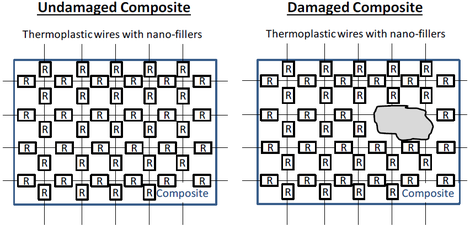Composite sensors
Self-sensing composites using selectively distributed conductive networks in conductive polymer composites
What is it about?
The research aims to develop an innovative sensor network with piezoresistive sensing capability through construction of oriented and selectively distributed conductive networks in conductive polymer composites (CPCs). Such fundamental research will involve several targets, including developing models to tune the electrical conductivity of a sensing layer or fiber made from thermoplastic nano-filled polymer composites, developing an inverse model to prove the feasibility of full field embedded strain measurements, and proving the feasibility of this sensing layer for monitoring within composite structures.
Objective of the research
Within this research work, thermoplastic-based flexible sensors with nano-fillers will be developed. The sensors can be either wires or filaments, which afterwards can be woven (or not) into a conductive layer that can be placed as a sensor layer inside a composite structure. This can be either a completely conducting polymer layer (filament) or multiple conducting polymer fibers. Once the thermoplastic sensors have been produced with appropriate dispersion of the nano-fillers, calibration tests will be done to see how modelling coincide with the test results. Once these thermoplastic sensors have been developed and characterized, they will be tested at laboratory scale for both production monitoring and integrity monitoring of composite structures. Figure 1 presents an example of a composite integrated with woven sensor wires for both original undamaged and damaged composite. The change in resistance due to broken sensor wires will offer analysis to the location of the composite damage.
Figure 1. Sensor strategy for monitoring composites by thermoplastic wires with nano-fillers
Type of funding and duration
CSC granted scholarship, 2015-2019
Contact
Coordinator: Prof. Ludwig Cardon
